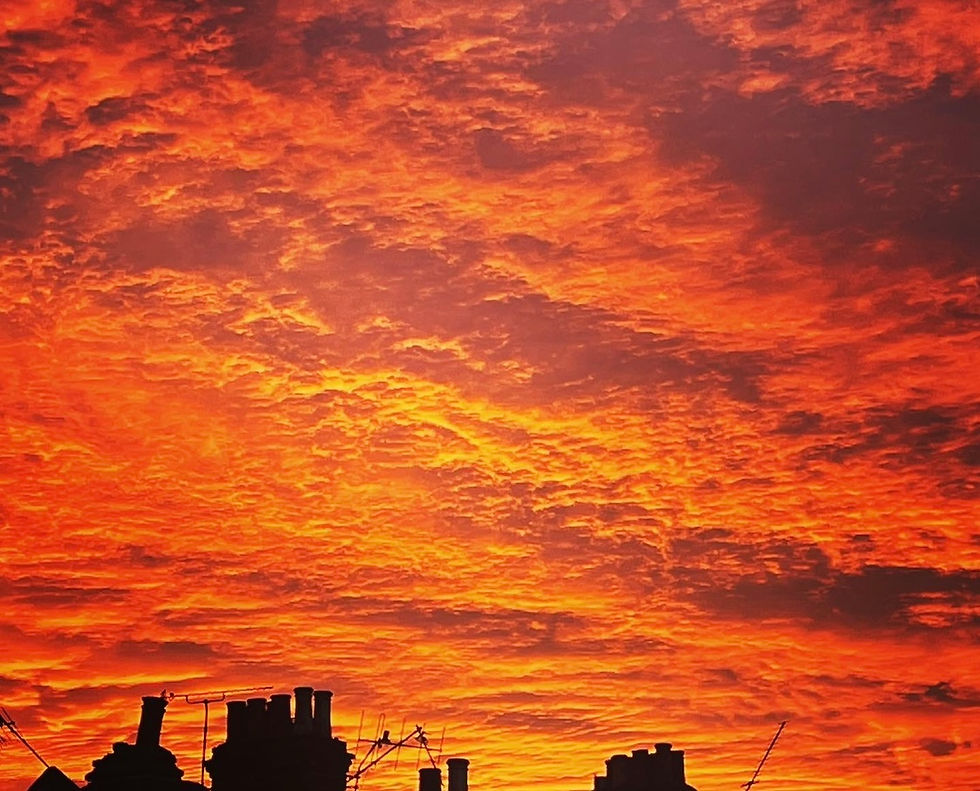Anarchic humanism
- anne

- May 17, 2023
- 4 min read
Updated: Jun 7, 2023

You meet Alice Neel right at the start of the exhibition: an 80-year-old stark naked woman, sagging boobs, paintbrush in hand and her cheeks rather flushed … because “it was so damned hard”. What I found most endearing was the air of defiance, as she looks you straight in the eye – sticking two fingers up at the objectification of women’s bodies. What a beautiful, candid introduction to this outstanding artist, who waited her whole career to do a nude self-portrait, “when people would accuse me of insanity rather than vanity”. And you’re set for the journey through Alice Neel’s life and art – because the two are always closely intertwined.

First stop: Havana, where she moved to marry Cuban artist Carlos Enriquez Gomez in 1925, and when her painting career began. By 1930, they’d come back to the U.S., living in Greenwich Village, New York. They split up after their oldest daughter died of diphtheria just before turning one, and Enriquez went back to Cuba, taking their youngest girl with him - a succession of events that nearly pushed Alice Neel over the edge. Instead, she threw herself into her art, immersing herself in the local bohemian community, painting beatniks, friends, lovers - and neighbours, like Nadya and Nona. Her work came to life - raw, cheeky, radical and always personal.
The impact of ‘Great Depression’ forced her to change course. The only way she could earn a meagre living by signing up to Roosevelt’s Public Works of Art Project, , in exchange of producing a small piece of art every six weeks. She moved from painting eccentric nudes to focusing on political topics – and there was no shortage of material. She joined the Communist Party USA, attended demonstrations, including against the rise of fascism, promoted the role of trade union and captured the social unrest and police violence, including disturbing scenes at the Uneeda Biscuit Strike, 1936.

The next major chapter of her life takes her to East – aka Spanish – Harlem - her personal connection with the place is palpable in her work. In an era of intense racial discrimination, Neel depicts diversity, with an honesty and compassion rarely seen at the time. She paints people she admires for their political commitment and their desire to end inequality – based on the intersection of race, gender, and class.

With the Cold War now in full swing – and the FBI were falling over themselves to interview, arrest and incarcerate people, Neel herself, as a member of the communist party became a target – but deemed harmless. Mercedes Arroyo was in a different league, however. As a Puerto Rican communist activist speaking out against social injustice and supporting Puerto Rican Independence, she aroused deep suspicion. Her family believe that the fire that killed her was a targeted arson attack.
I paint using the people as evidence
From Black communist intellectual Harold Cruse to Willie McGee, African-American man put on death row after being wrongly accused of raping a white woman, or labour organiser Mother Bloor’s funeral. Each portrait tells such an important story – providing a slice of life and deep reflection on US society of her time – putting people front and centre of her art.
It wasn’t until she went into therapy in 1958 that her work took off. She became bolder about approaching people to sit for her, her style more defined, and the subject matters she was interested in painting were more en vogue in the era of the civil rights movement and second wave feminism of the 1960’s and 70’s. She was finally being noticed.
The lower floor, of this beautifully curated exhibition, is filled with gems from that latter period – a mixture of ‘celebrity’ portraits and unsung s/heroes - including Jackie Curtis, actress, singer, writer and Andy Warhol superstar – as a boy, and Warhol himself, post the shooting that very nearly cost him his life – his eyes closed, scar and surgical corset showing. Neel managed to capture a different, more vulnerable Warhol. This section also includes the poignant, unfinished portrait of James Hunter, the Black Draftee who never returned from Vietnam and whose portrait remains unfinished – in memoriam; Carmen Gordon, a Haitian designer whose husband fled to the US after campaigning against dictator Duvalier, who lived nearby – captured here breat feeding her daughter in Carmen and Judy; and ‘Marxist Girl’ Irene Peslikis, the Greek American founder of radical feminist group Redstockings … and so many more interesting, quirky, soulful characters.
Yet, in spite of her lifelong commitment to her art and her genuine interest in “painting to reveal the struggle, tragedy and joy of life”, recognition didn’t come easy – partly because her work was not considered ‘fashionable’ in the era of abstraction and Pop – and of course because she was a woman. It wasn’t until 1974 that she was included in the Whitney’s Annual Exhibition … but only after a petition by feminist art historian Cindy Nemser. Still, that didn’t stop Neel from sticking to what she loved and did best: painting a community who shared her deep desire for a fairer society with greater sexual freedoms, whilst challenging and subverting artistic conventions … just telling it as it is.



























Comments